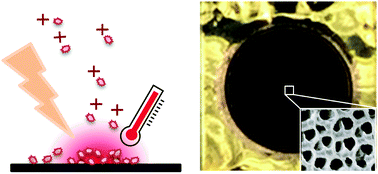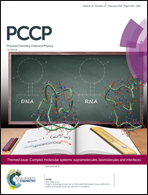Tailoring a nanostructured plasmonic absorber for high efficiency surface-assisted laser desorption/ionization
Abstract
The surface-assisted laser desorption/ionization (SALDI) effect is investigated on Au plated anodized aluminum oxide (Au/AAO) thin films, a new type of low-cost broadband plasmonic absorber, which has attracted a lot of attention recently. Mass spectrometry (MS) measurements show that the ionization efficiency of Au/AAO substrates can be significantly improved (×30 fold) by simply tuning the size of nanopores in Au/AAOs. This leads to a signal-to-noise ratio of 394, which is 4 times better than the result obtained using the conventional matrix-assisted laser desorption/ionization (MALDI)-MS technique. Experimental and theoretical studies show that the dramatic improvement is caused by the pore-size-dependent optical and thermal properties of Au/AAOs. It provides a simple yet effective strategy for designing and building high performance plasmonic SALDI substrates.



 Please wait while we load your content...
Please wait while we load your content...